AN EXCLUSIVE SABRANG SERIES (PART III)
In line with the brute majoritarian agenda of the Sangh-BJP combine, all states except Telangana –that is Madhya Pradesh(MP), Chhattisgarh, Rajasthan, Mizoram—show a sharp decline in the disbursals of Pre-matric Scholarships for Minorities, a pet project of the UPA under the PM’s 15 Point Programme. Tragically this is not even an election issue!
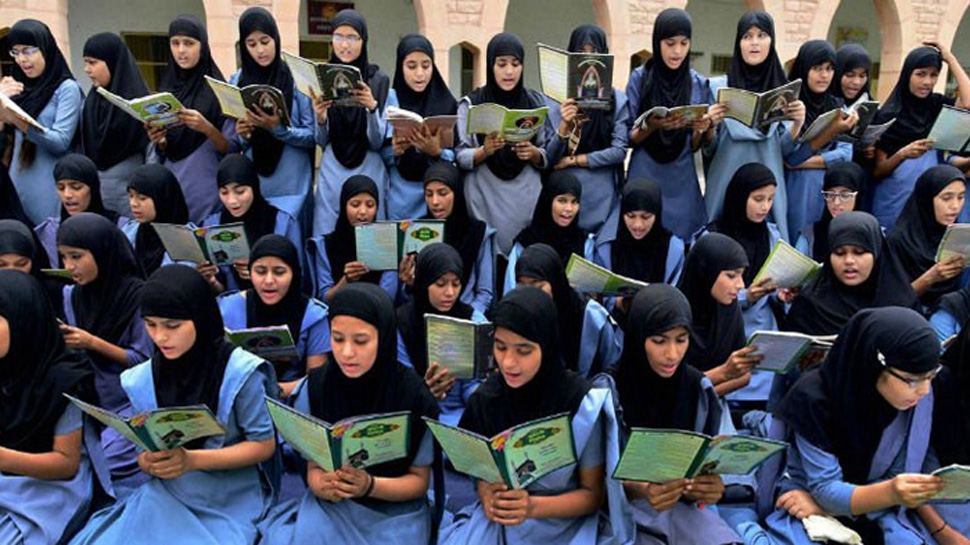
The pre-matric scholarship serves as a crucial lifeline to poor minority children to access elementary education, which is a right of every child in the country. Not only has the Government shrugged the responsibility of making education accessible universally, it has cut the financial allocation to the PM’s 15 point programme started during the UPA-II regime. This has affected all states alike. All states, including the states where state elections are underway, this form of affirmative action has been denied. Not only is there no minority representation but obviously minority votes do not matter. All election bound states 2018 are reeling under the declining coverage of pre-matric scholarships to their significant minorities. Tragically, this is not even an election issue.
| Sabrangindia has been running an EXCLUSIVE series on the deliberate and conscious decline in the PM’s Minority Scheme Read: EXCLUSIVE: Sab Ka Saath, Sab Ka Vikas a Farce, as Direct Benefit Transfers Spell Doom for Minority Students Also Read: Modi Regime squeezes out ALL Minorities, Even Buddhists, from Scholarships |
A majoritarian agenda is reflected in the present central government’s attitude towards minority welfare. Affirmative action for minority students is required because the living conditions of minorities are significantly worse than the general populace. However, just as the supremacist Sangh-BJP combine had rubbished the Justice Sachar Committee report that analysed the pathetic socio-economic status of India’s Muslims, an Indian polity dominated by their majoritarian agenda, is not even flagging the crucial aspect of this decline. Basic rights of the poorest of the poor, that includes India’s religious minorities stand abrogated even as elections approach.
The states that go to the polls are Madhya Pradesh, Chhattisgarh, Rajasthan, Mizoram and Telengana. Since Telengana was created in 2014, its population data is combined with that of Andhra Pradesh in
the census 2011 demographic data. Due to this the outreach of scholarship to their minorities as a percentage of total minority students enrolled in schools could not be done. Figure 1 shows the decline of pre-matric scholarship coverage to significant minorities of election bound states except Telangana.
Figure 1: The decline of percentage outreach of pre-matric scholarship among significant minorities of election bound states
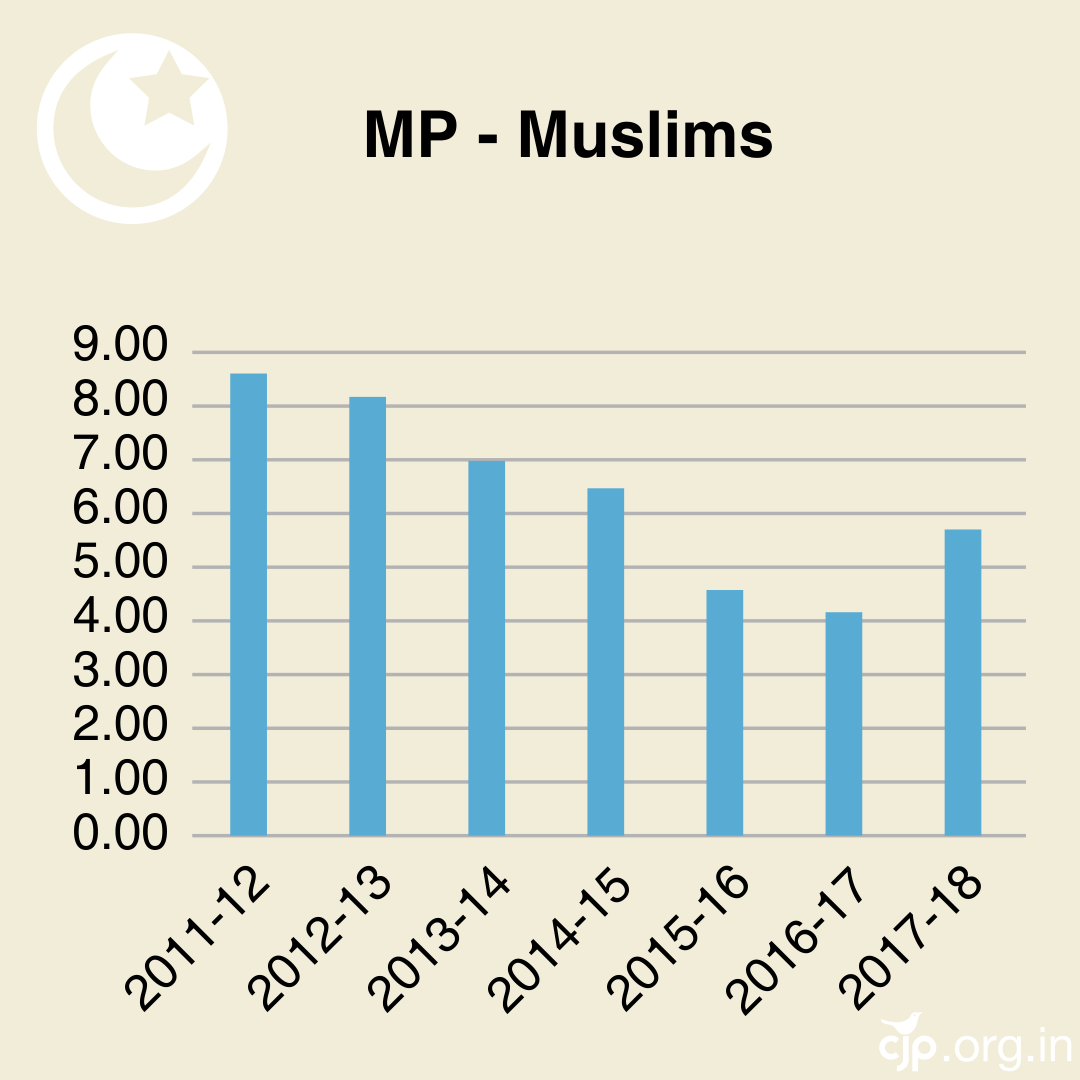
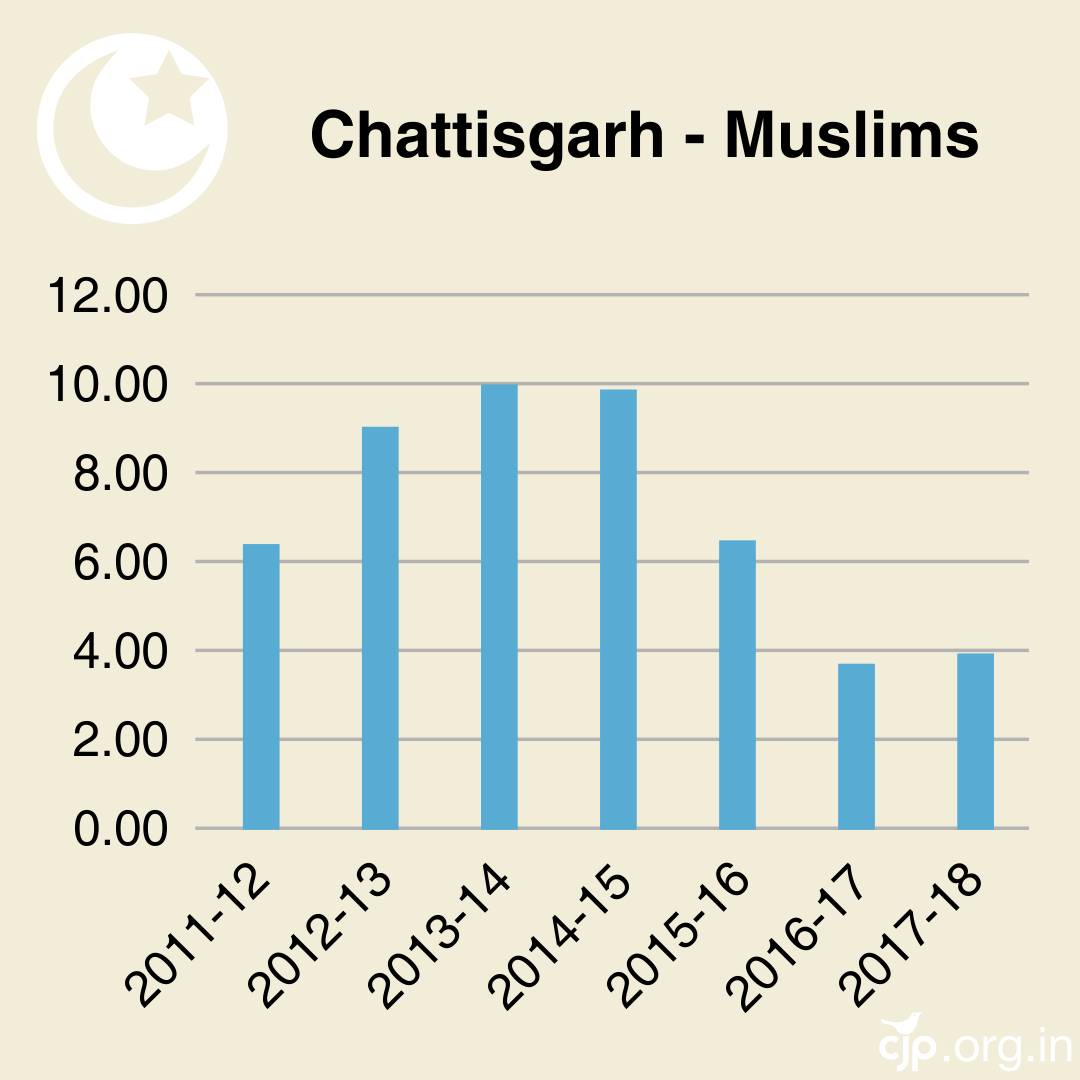
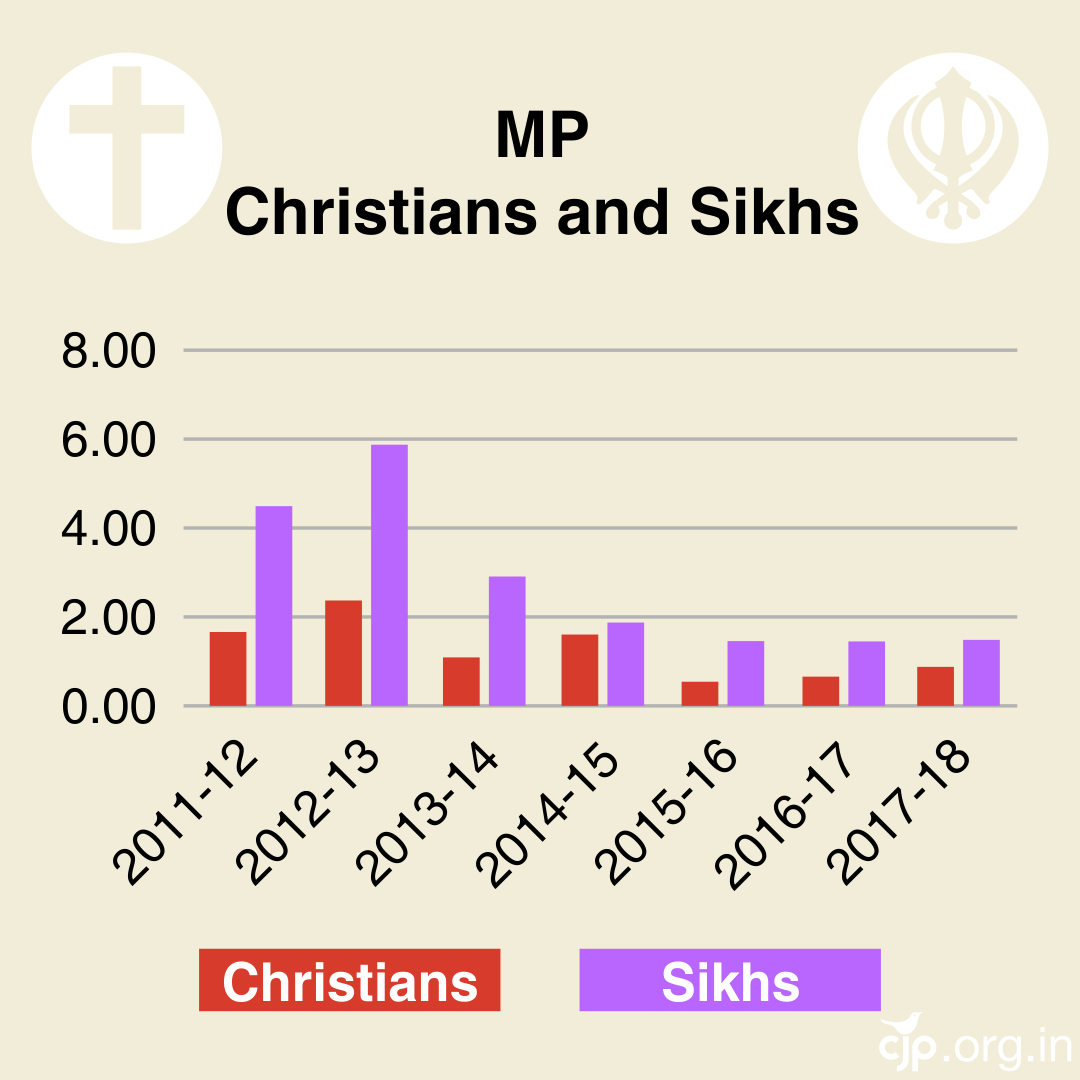
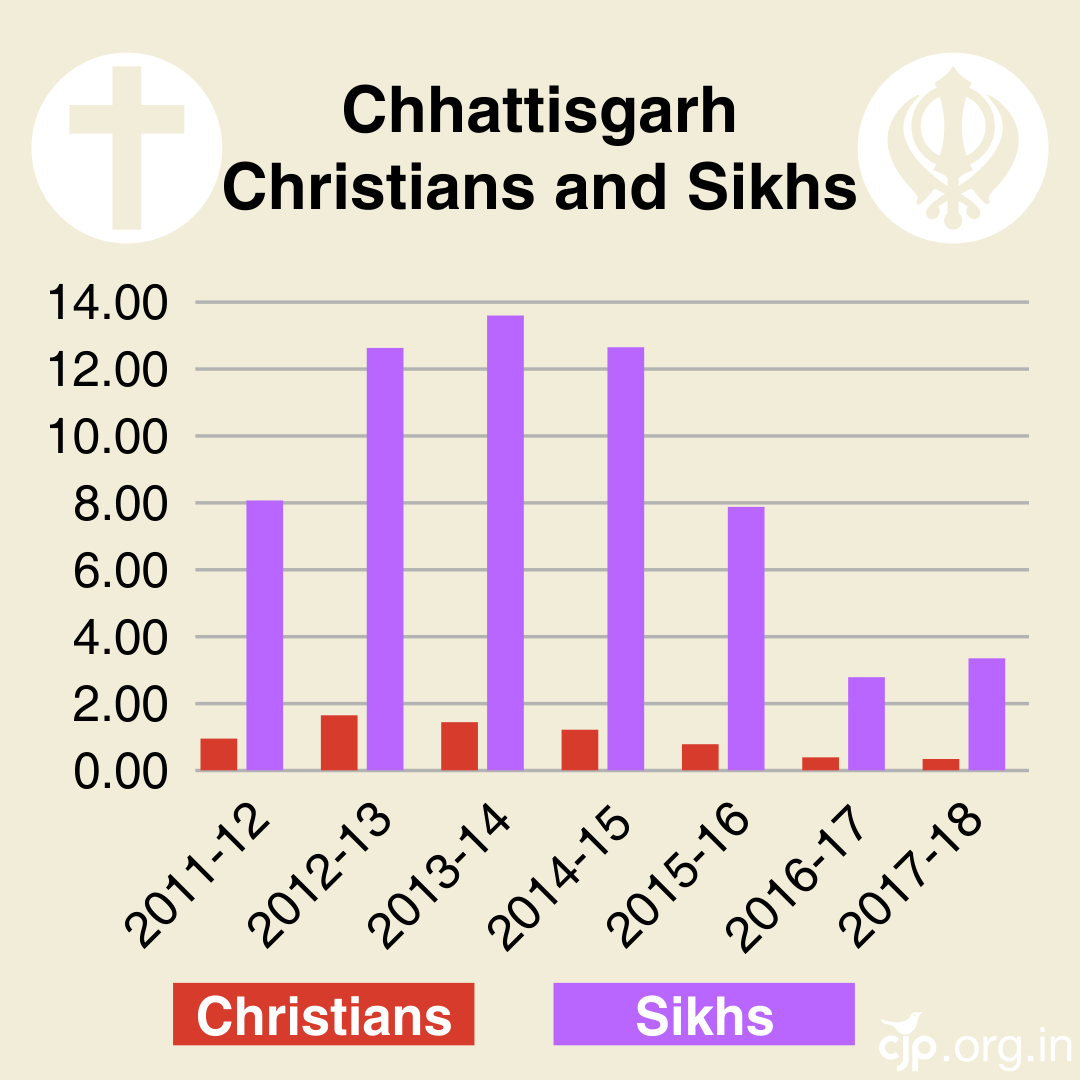
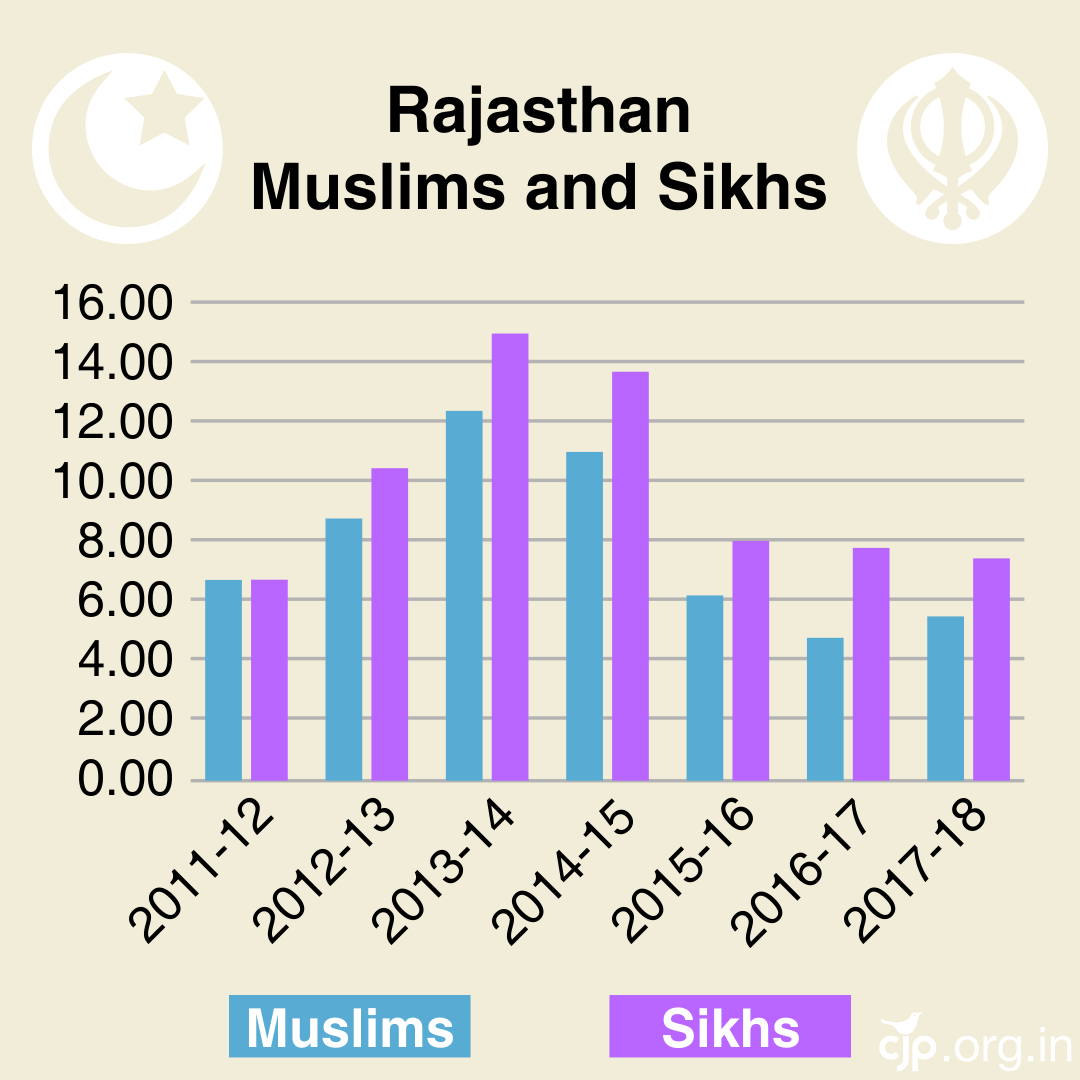
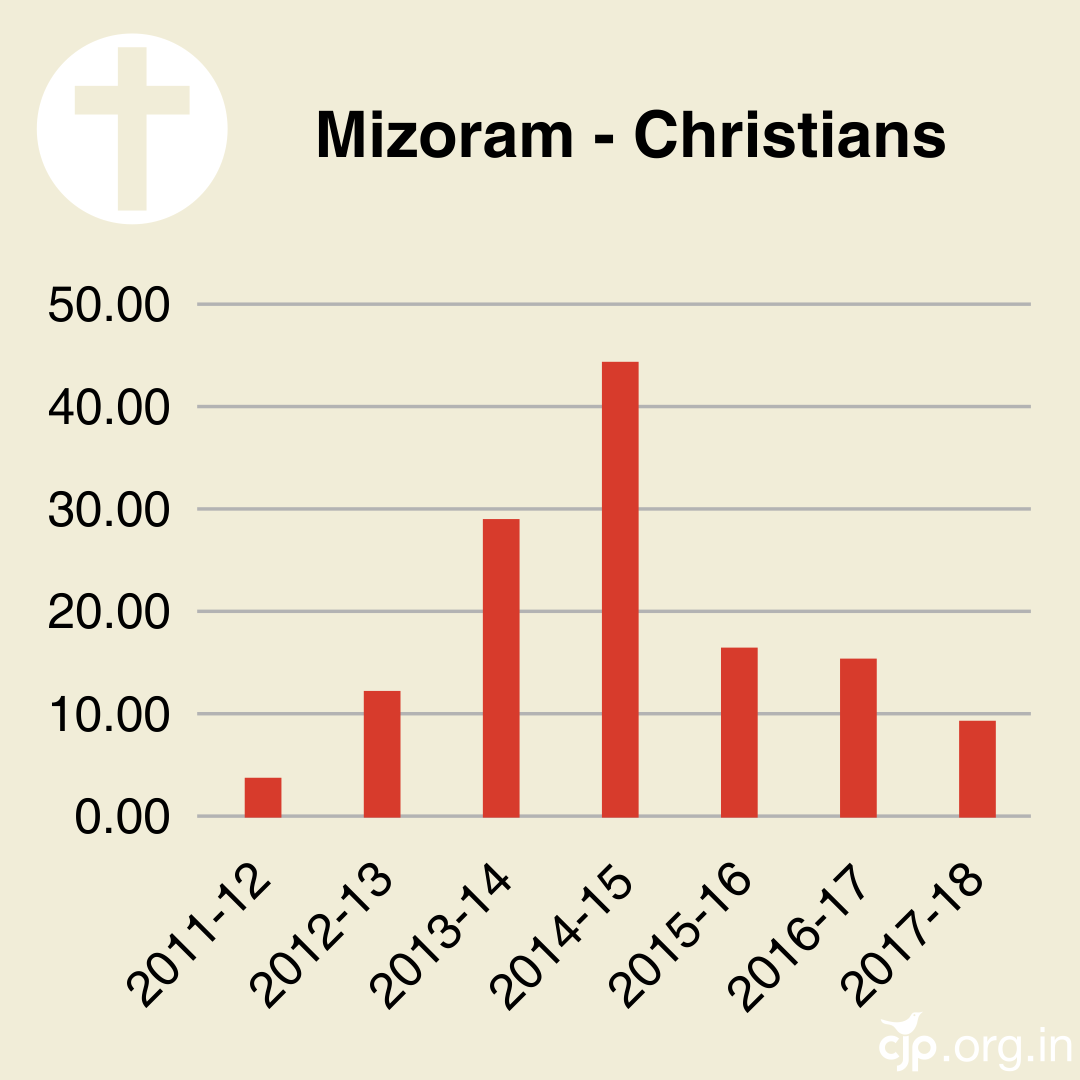
As is evident from Figure 1, the minority coverage in every state has declined over the period 2011-12 to 2017-18 although the level and rates of declines are different. The coverage of Christians in Mizoram was as high as 45% of the total students enrolled in pre-matric classes and suddenly declined to a less than 20% level within the span of a year. In contrast the coverage of Muslims in Madhya Pradesh has been declining significantly over the entire period except the last year 2017-18.
Pre-matric outreach to Chhattisgarh Christians, Chhattisgarh Muslims as also Madhya Pradesh and Rajasthani Christians and Sikhs experienced a peak in the year 2013-14 (UPA II regime) and has, thereafter began declining. The decline of outreach has either reached the 2011-12 level or lower for all of these sections. However, the population used to calculate the outreach is the census 2011 population which has only grown over the period. This implies that an outreach level comparable with the 2011-12 level is actually lower than that, after adjusting for population growth over the period. These declines appear even more dismal when the level of outreach is found to be lower than even 20% in every other minority except Christians in Mizoram.
This decline is not because the poverty levels in these states have declined or that the developmental promises of the BJP have borne fruit. The Human Development Index is a weighted index of the wealth, education and health levels in a society that indicate the socio-economic wellbeing of a society. Figure 2 shows the HDI score of these states as compared to that of India and only two out of five of the election bound states are above the HDI level of India. This implies that the socio-economic wellbeing of the rest of the states is even lower than the Indian average. The other stark characteristic is the stagnation of the HDI over the period, that is, there has been no substantial change in the socio-economic development of the states. Only the states of Telangana and Mizoram are above the Indian HDI score. The HDI of Chhattisgarh, Rajasthan and Madhya Pradesh are low but improving marginally annually. The HDI levels are not changing significantly for any state over the period.
Figure 2: HDI index of India vis-a-vis states with upcoming elections over the period 2011-15
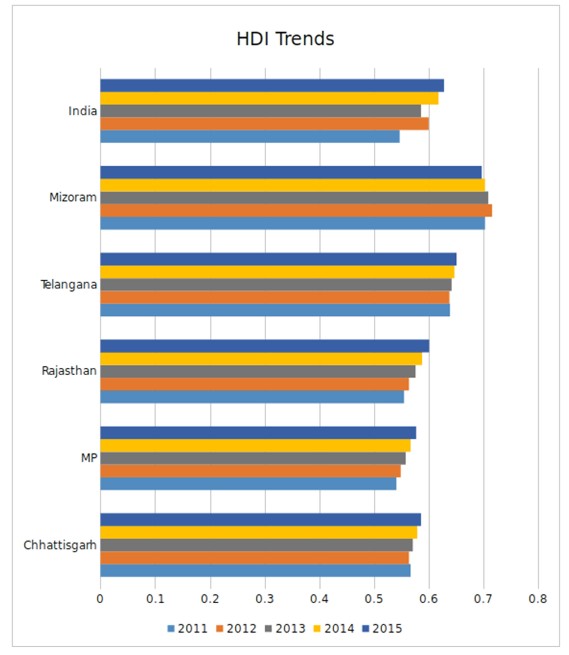
The decline in pre-matric scholarship has a reason and is an outcome of the lower socio-economic development in these states. Education helps break the poverty trap but poverty is what stops people from receiving education, trapping them in a poverty trap. A CAG enquiry in Madhya Pradesh found that the net enrolment ratio fell for classes 1-5 from 93.66 to 78.93 from 2013-14 to 2014-15 though it increased marginally for classes 6-10. However, 14.34 lakh students dropped out of schools between standard 5-10, thus retention of students was low in MP. This decline in enrolment ratio is likely to be coupled with an increase in dropout rates in the future given that Madhya Pradesh has decided to scrap the no detention clause that it adopted while implementing the RTE act. Chhattisgarh is likely to follow in its footsteps and therefore its declining outreach amongst minorities is likely to reduce even further.
Both these states report extremely low quality of education with children in high classes not able to solve problems of much smaller standards. This is a nationwide phenomena for government run schools, in the fact two Indian states participated in a scheme that compares attainment around the world and came 72nd-74th out of 74 jurisdictions in reading, maths and science. Chhattisgarh teachers were reportedly also found to be reaching schools inebriated and teaching that a week has six days 46% of teachers in Madhya Pradesh are teaching without any training MP has had total strength of 117502 para teachers inclusive of contract teachers, shikshakarmis and temporary teachers like gurujis. This year, the number would increase by 50000. These para teachers do not have the basic competency in subjects and teaching techniques. The extension of compulsory education to middle school beyond primary education has come with a government strategy to appoint temporary and untrained teachers at low salaries to cope with the requirement. About 96000 out of the 1.17-lakh para teachers are working at middle school level. One third of para teachers in country are in Madhya Pradesh, this is the highest among all Indian states. There are innumerable reports on the diminishing standards of learning as well as the deplorable condition of infrastructure.
Besides this over the past decade low-cost private schools have also boomed. Their rolls increased from 44m in 2010-11 to 61m in 2016-17, while those in government schools fell from 126m to 108m in the 21 of India’s 29 states for which there is any data. It is also more likely that children will be able to learn english sooner in private schools due to teaching conducted in english medium. This is an important skill due to the digital age we live in, besides it is a huge matter of prestige to be able to communicate in english.
Even as the RTE Act needs to be implemented, Rajasthan has shut about 8,000 government schools and merged others; the number of schools has dropped from 82,000 in 2013 to 63,000 now. According to the DISE report 2015-16, Mizoram saw a peak in number of Government schools in 2012-13 and a sharp decline to below 2007-08 levels in the very next year. Private schools increased at unprecedented rates from 2014-15 onwards. This might be the reason behind the stark decline in pre-matric disbursement in 2015-16, since fewer poor minority children could afford private education they dropped out of the education system. Indeed, the enrolment in government schools has been declining while that in private schools has been increasing. Only 25% of private school seats are reserved for backward students under the RTE act.
This situation of the state deliberately ensuring unaccountability and low performance in its public schools fans the rhetoric that government schools are not at with private English medium education, though there is no ‘quality check’ in private institutions with high fees charged. The state government’s negligence includes, reportedly providing schools with untrained and irresponsible teachers, infrastructure bottlenecks of basic toilets and drinking water and lack of funds at the ground level. The only way to remedy the situation is to provide funds and trained teachers to these institutions. Monitoring of teachers and maintenance of infrastructure require a boost. On the contrary despite the RTE Act the school system is unable to retain its students due to lack of teacher’s involvement and quality education.
Government schools are able to maintain some basic enrolment level by offering mid day meals but really education is not being made accessible because despite enrolment learning levels are extremely poor. The no detention policy is widely debated since some argue that it dumbs the student down and they fail the moment they reach class eleven and the policy is no longer applicable to them. The alternative devised to this is that students take examinations twice in class five and eight where they could be detained if they fail to perform better in an improvement exam to be held six months after the original exam. This debate does not look into the real causes of why quality education is not being imparted in government schools, but rather looks for quick-fixing the dropouts at the eleventh standard. It is much more important to get to the root of why teaching outcomes are so poor, why are teachers not motivated enough to teach and why are students compelled to dropout or stay out of the education system.
Ankita Rastogi is a PhD scholar at Jawaharlal Nehru University, Delhi